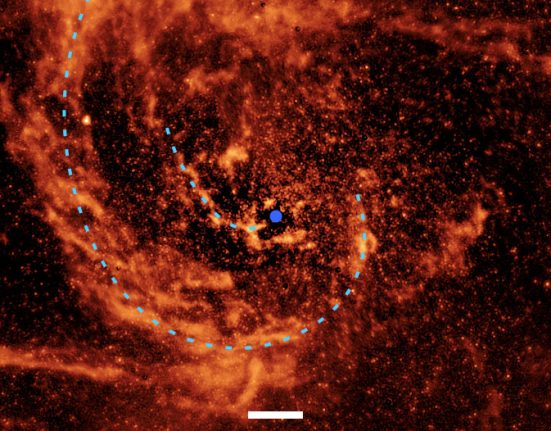When you look up tonight, you may notice that alongside the bright stars are clusters dotting the sky. The starry fluff of the Pleiades, for example, contains members that were born together about 100 million years ago.
Astronomers are looking back in time, showing that many star groups were once organized into larger gatherings that have since broken up. The work, published in Nature and presented at the 244th meeting of the American Astronomical Society, paints a picture of the enormous stellar nurseries that created many of the young stars within 3,000 light years.

ESO/STScI Digitized Sky Survey II
“We are providing the origin stories of most of the nearby young star clusters surrounding the Sun,” says Cameren Swiggum (University of Vienna, Austria).
Cosmic rewind
Swiggum and his colleagues used the catalog of more than a billion stars compiled by the European Space Agency's Gaia mission to trace the origins of young star clusters near the Sun. Gaia provides the three-dimensional position and velocity of these stars, measurements which can be surprisingly difficult to obtain for nearby celestial objects. Even the distance of the Pleiades was disputed for a long time. But with Gaia's information in hand, astronomers can now press the forward and/or rewind button on a cosmic video of the solar neighborhood.
“We can take the velocity vectors that we see for each of these star clusters and just invert them,” Swiggum explains. “We can trace these groups back in time and find where they really came from.”
What they found is that the groups' traces converge. Selecting hundreds of clusters even younger than the Pleiades, Swiggum and his colleagues tracked the movements of their stars over the past 30 million years. The researchers found that nearly two-thirds of the clusters (155 of 272) came from one of three points of origin: three huge stellar nurseries that gave rise to dozens of clusters each.
The results seem trustworthy, says Alice Quillen (University of Rochester), who has studied similar data but did not participate in the current study. “The backward integration doesn't go that far back (about ¼ of a (galactic) rotation), so perturbations from things like spiral arms probably won't affect the orbits as much,” she explains. “The fact that the birthplaces in the backward integrations were limited to small regions seems really nice (and suggests that their orbital integration is robust).”

C. Swiggum / AAS 244
Blast from the past
Nurseries this large will not only produce low-mass stars like the Sun. They will also produce more massive stars, whose evolutions unfolded fast and furious. In fact, not all of the cluster stars have survived to the present day: the team estimates that 200 of the massive stars born within the clusters have since exploded in supernovae.

ESO/STScI Digitized Sky Survey II
The energy pumped into the galaxy by these supernovae could be responsible for some of the dust-covered layers that astronomers have observed nearby. For example, Swiggum says, supernovae in a cluster called CR 135 and its natal family could be responsible for clearing out a huge dust-covered cavity—a cavity 3,000 light-years across. galactic supershell known as GSH 238+00+09, first identified in the 1990s.

C. Swiggum / AAS 244
The chain of reasoning is impressive: from low-mass stars in young clusters, Swiggum's team has inferred the existence (and explosions) of massive stars that we can no longer see. And in doing so, they can explain the structures that surround the Sun today.
However, there are limits to this type of study. Using Gaia data, astronomers can go back tens of millions of years to see where star clusters formed, but they can't (yet) look back the billions of years needed to see the birthplace of the Sun.
“We currently do not have the ability to trace the Sun's orbit back to its birth 4.6 billion years ago due to the dynamic nature of the galactic environment on such long time scales,” says Swiggum. But you can make a guess: “Since the Sun probably formed in a star cluster, we can speculate that it could also have formed in a cluster that was part of a larger family of clusters, similar to the three young families we see. today.”
Explore some of the groups in this study in this interactive chart.








Leave feedback about this